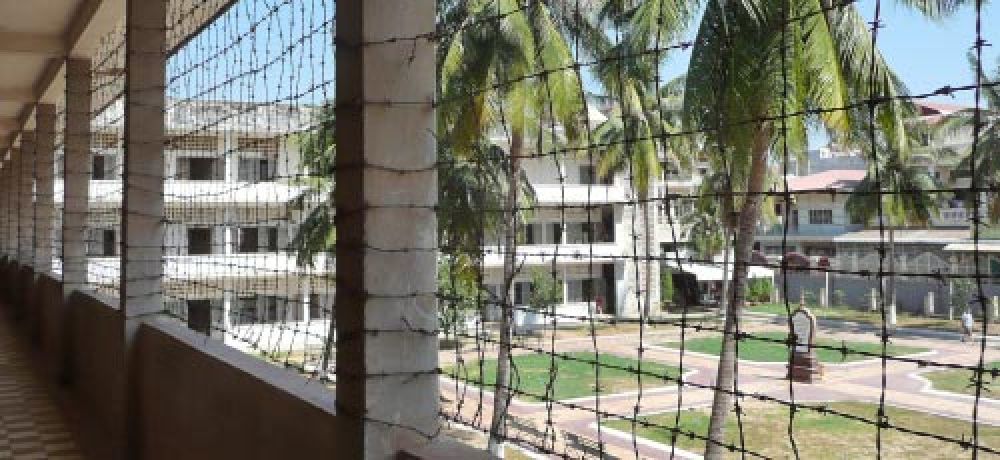

The Tuol Sleng Genocide Museum, formerly known as S21 Prison, stands as a somber testament to the tragic history of Cambodia under the Khmer Rouge regime. The site was once the Tuol Svay Prey High School, a place of learning which was transformed into one of the most notorious detention centers in Cambodia during the Khmer Rouge era from 1975-1979.
After the fall of the Khmer Rouge, the prison was uncovered by the Vietnamese forces in 1979. They found a harrowing scene: only a handful of survivors among the many tortured and executed during the regime's genocidal campaign against its own people. An estimated 17,000 individuals passed through the gates of S21, and fewer than a dozen survived. The former school was quickly turned into a museum to preserve evidence of the crimes committed by the Khmer Rouge and to remember the victims.
In the early 1980s, with the Khmer Rouge ousted, the Tuol Sleng Genocide Museum opened to the public. The site was left largely untouched, with rooms preserved as they were found. Former cells, torture devices, and the haunting photographs of victims provide a visceral experience for visitors. Initially, the museum mainly attracted scholars, historians, and those directly affected by the Khmer Rouge regime. However, as Cambodia began to stabilize and rebuild, the Tuol Sleng Genocide Museum became an important destination for tourists seeking to understand Cambodia's history.
In recent years, the concept of 'dark tourism'—visiting sites associated with death and tragedy—has become more mainstream, and locations like Tuol Sleng see a consistent stream of international visitors. The museum is an integral part of historical tours in Phnom Penh, with visitors often paying respects and learning about the broader context of the Cambodian genocide. Many tours also include the Choeung Ek Genocidal Center, known as the Killing Fields, which serves as a mass grave site for victims of the Khmer Rouge and a further place for reflection and remembrance.
There is a focus on educational tourism; visitors come to bear witness, learn from the past, and ensure such atrocities are not repeated. Efforts have been made to preserve the artifacts, improve the museum's educational resources, and provide more comprehensive narratives through audio tours, often narrated by survivors of the regime.
As a destination, the Tuol Sleng Genocide Museum continues to evolve. There is ongoing work to maintain the integrity of the historical record and to support survivors in sharing their stories. As awareness of Cambodia’s past grows, the museum remains a poignant symbol of resilience and a solemn reminder of the importance of preserving history to prevent future tragedies.
For those planning a visit, it's recommended to prepare for an emotionally potent experience. The museum is open daily to the public, and it's advisable to hire a knowledgeable guide or use an audio guide to gain a deeper understanding of the site's history. While the visit can be very somber, it is considered an essential stop for anyone wanting to understand the complex and painful history Cambodia endured and to pay tribute to those who suffered.
It should be noted that due to its graphic nature, the museum may not be suitable for young children. Visitors should approach the experience with respect and sensitivity, keeping in mind the impact of this historical period on Cambodian society.